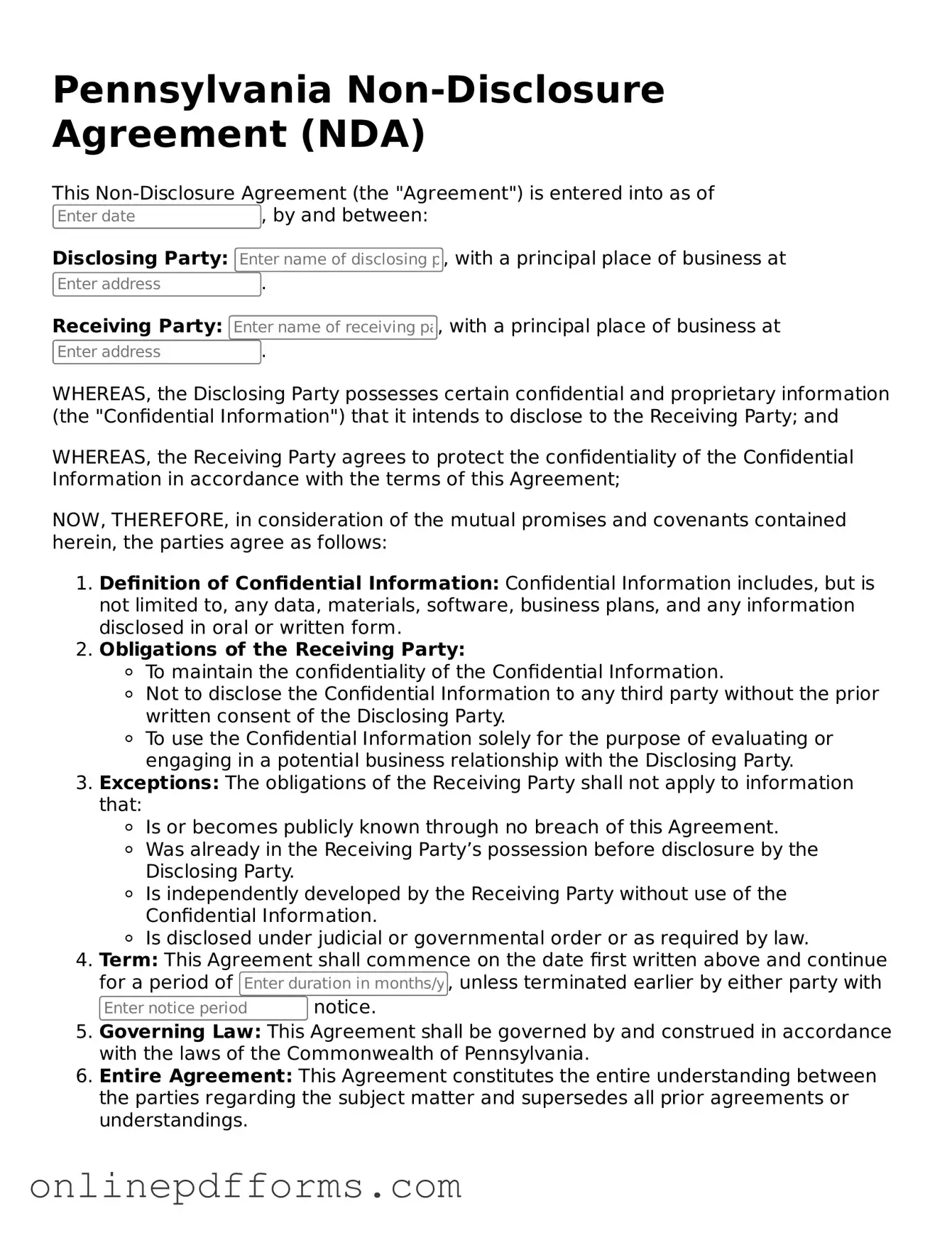Blank Pennsylvania Non-disclosure Agreement Form
A Pennsylvania Non-disclosure Agreement (NDA) is a legal document that protects confidential information shared between parties. This form ensures that sensitive data remains secure and prevents unauthorized disclosure. To safeguard your information, consider filling out the NDA form by clicking the button below.
Open Non-disclosure Agreement Editor Now
